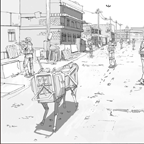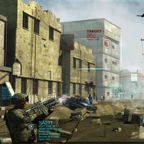Squad X Core Technologies Seeks To Bring Technological Advances To The Infantry Squad
New program pursues integrated systems to enhance infantry squad adaptability and flexibility in complex environments
Warfighters in aircraft, on ships and in ground vehicles have benefited tremendously from technological

advances in recent decades, with advanced capabilities ranging from real-time situational awareness to precision armaments. But many of these benefits depend on equipment with substantial size, weight and power requirements, and so have remained unavailable to dismounted infantry squads who must carry all their equipment themselves.
DARPA’s new Squad X Core Technologies (SXCT) program aims to address this challenge and ensure that dismounted infantry squads maintain uncontested tactical superiority over potential adversaries without being overburdened by cumbersome hardware. The goal is to speed the development of new, lightweight, integrated systems that provide infantry squads unprecedented awareness, adaptability and flexibility in complex environments, and enable dismounted Soldiers and Marines to more intuitively understand and control their complex mission environments.
“SXCT aims to help dismounted infantry squads have deep awareness of what’s around them, detect  threats from farther away and, when necessary, engage adversaries more quickly and precisely than ever before,” said Maj. Christopher Orlowski, DARPA program manager. “We are working towards advanced capabilities that would make dismounted infantry squads more adaptable, safe and effective.”
threats from farther away and, when necessary, engage adversaries more quickly and precisely than ever before,” said Maj. Christopher Orlowski, DARPA program manager. “We are working towards advanced capabilities that would make dismounted infantry squads more adaptable, safe and effective.”
SXCT plans to explore four key technical areas:
- Precision Engagement: Precisely engage threats out to 0.6 mile (1,000 meters), while maintaining compatibility with infantry weapon systems and without imposing weight or operational burdens that would negatively affect mission effectiveness
- Non-Kinetic Engagement: Disrupt enemy command and control, communications and use of unmanned assets at a squad-relevant operational pace (walking with occasional bursts of speed)
- Squad Sensing: Detect potential threats out to 0.6 mile (1,000 meters) at a squad-relevant operational pace
- Squad Autonomy: Increase squad members’ real-time knowledge of their own and teammates’ locations to less than 20 feet (6 meters) in GPS-denied environments through collaboration with embedded unmanned air and ground systems
